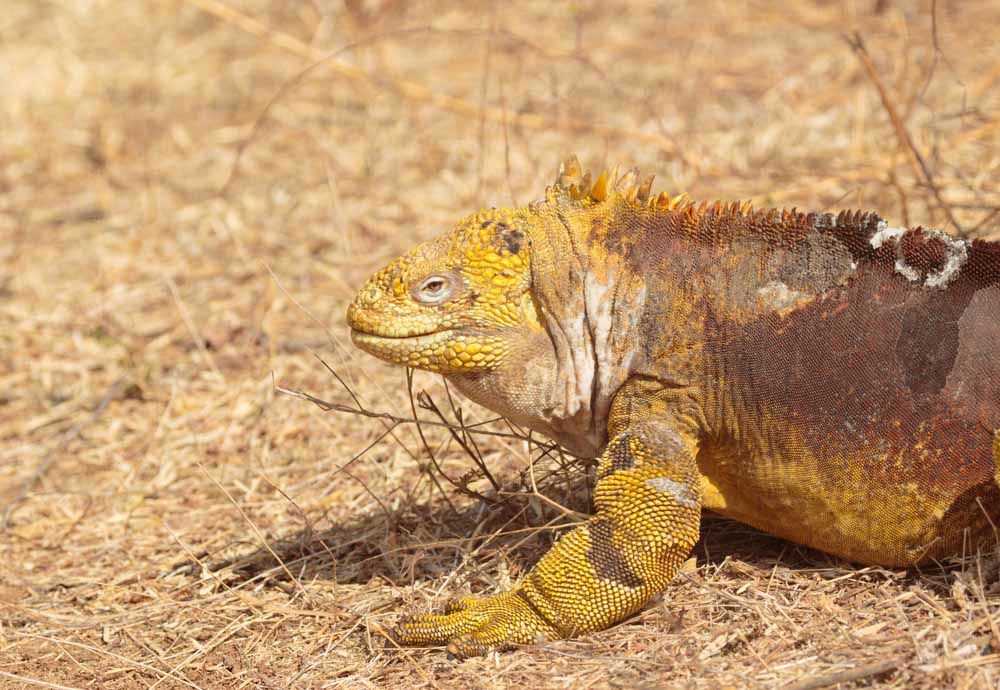Early in the morning, we disembarked onto the uninhabited northwest side of Santa Cruz Island. After a dry landing, we hiked further inland to explore the incense tree forest area, where we spotted a few species of Darwin finches, yellow warblers, and a large variety of native and endemic plants.
We had the opportunity to photograph the colorful Galapagos land iguana. These golden dragons inhabit six of the Galapagos Islands and are one of the main herbivores, together with the giant tortoises of the Galapagos. Some land iguanas we saw were feeding on prickly pear cacti, while others rested under the shade of native vegetation. Dragon Hill is one of the various visitor sites where the Galapagos National Park Service has curbed the population of introduced species, such as feral pigs, goats, and rats that threatened native species
Afterward, we went deep-water snorkeling around the coast of Guy Fawkes islets, where we saw a large variety of fish and colorful marine invertebrates along the vertical cliffs. Some of us also spotted some white-tipped reef sharks.
After lunch, we navigated around Daphne Islets and learned about geology of these islets, as well as the scientific research on the Darwin finch population there. After a smooth navigation, we disembarked on a calm, white-water beach known as Bahia Borrero, where we had the chance to go kayaking around mangrove-protected areas, or to explore the coast by Zodiac. On both excursions, we saw black-tipped reef sharks, spotted eagle rays, and white-tipped reef sharks.
This time of the year the weather is just perfect. The sun is out and there is still some breeze for us to enjoy, which made our visits delightful and enjoyable. We closed our expedition day with a wonderful sunset, looking forward to the next enchanted island to explore in the upcoming days.







